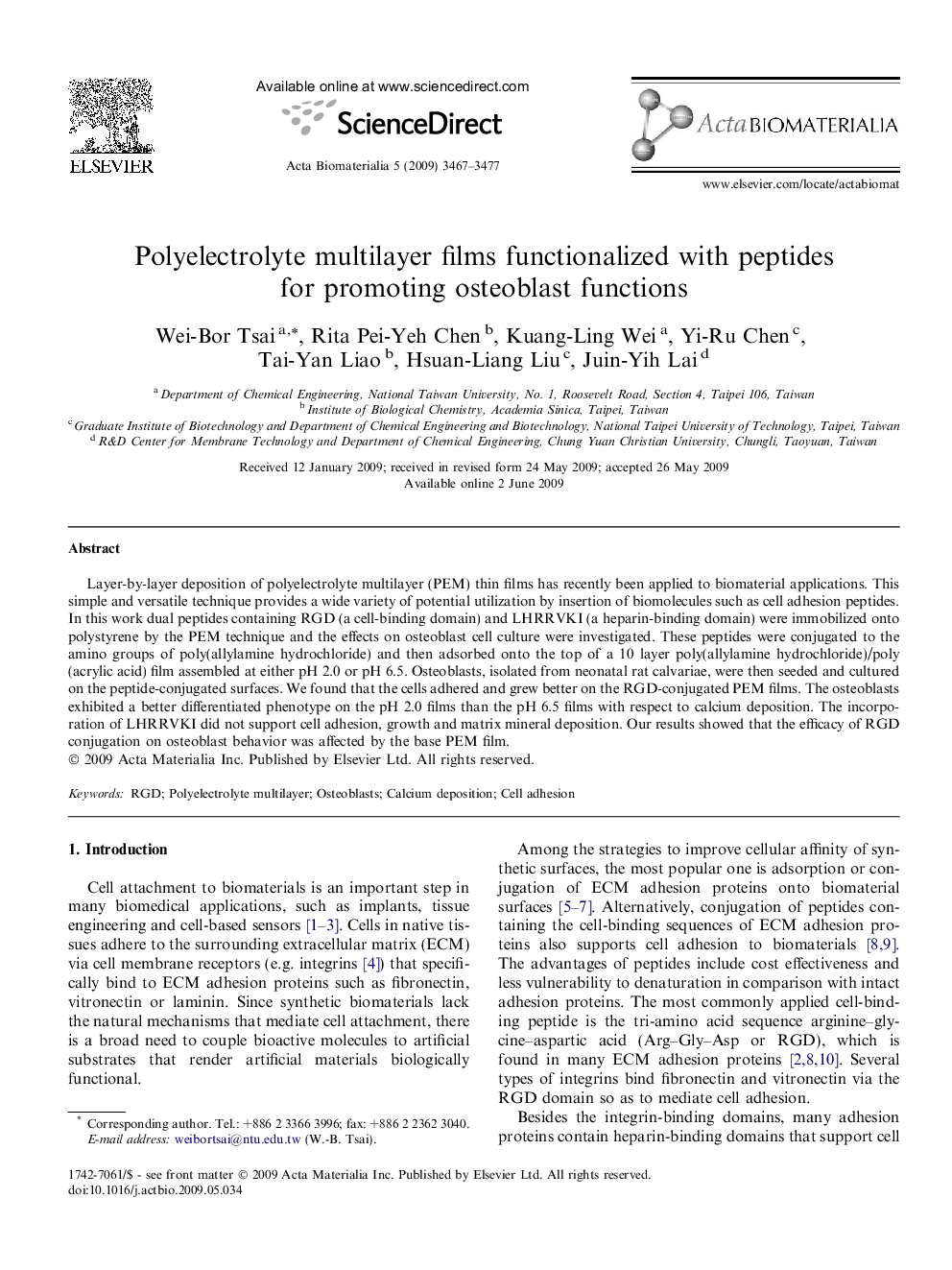| Article ID | Journal | Published Year | Pages | File Type |
|---|---|---|---|---|
| 1874 | Acta Biomaterialia | 2009 | 11 Pages |
Layer-by-layer deposition of polyelectrolyte multilayer (PEM) thin films has recently been applied to biomaterial applications. This simple and versatile technique provides a wide variety of potential utilization by insertion of biomolecules such as cell adhesion peptides. In this work dual peptides containing RGD (a cell-binding domain) and LHRRVKI (a heparin-binding domain) were immobilized onto polystyrene by the PEM technique and the effects on osteoblast cell culture were investigated. These peptides were conjugated to the amino groups of poly(allylamine hydrochloride) and then adsorbed onto the top of a 10 layer poly(allylamine hydrochloride)/poly(acrylic acid) film assembled at either pH 2.0 or pH 6.5. Osteoblasts, isolated from neonatal rat calvariae, were then seeded and cultured on the peptide-conjugated surfaces. We found that the cells adhered and grew better on the RGD-conjugated PEM films. The osteoblasts exhibited a better differentiated phenotype on the pH 2.0 films than the pH 6.5 films with respect to calcium deposition. The incorporation of LHRRVKI did not support cell adhesion, growth and matrix mineral deposition. Our results showed that the efficacy of RGD conjugation on osteoblast behavior was affected by the base PEM film.
